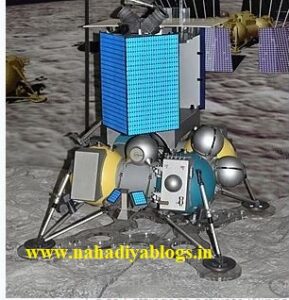Luna-25 Mission Glitch
1st of all we know about Russia’s Luna-25 mission of moon.

Russia, with its long history of space exploration, has always been fascinated by the moon. The country’s luna-25 missions stretch back to the Soviet era, with the successful launch of Luna 2 in 1959, which became the first human-made object to reach the moon. In 1966, Luna 9 made history by delivering the first photos from the lunar surface. Following missions included Luna 16, which successfully returned lunar dirt to Earth in 1970, and Luna 24, which accomplished the same feat in 1972. Following a pause in lunar exploration, Russia resurrected its lunar goals in the twenty-first century with missions such as Luna-Glob and Luna-Resurs. However, it is Lunar-25 that has the world’s attention right now. In the last we discuss about Luna-25 Mission Glitch.
Objectives and Goals for Luna-25:
Luna-25, also known as Luna-25, is Russia’s most recent lunar mission, with the goal of exploring the moon’s south pole region. This mission’s key goals are as follows:
1. Luna Surface Exploration: The Luna-25 lander will land on the moon’s surface, specifically in the south pole region. Scientists are particularly interested in this region because it is thought to contain water ice in permanently shadowed craters. The lander will examine the lunar surface thoroughly, examining its geological and chemical makeup.
2. Sample Collection: Luna-25, like its predecessors, seeks to collect samples from the moon’s surface. These samples will provide significant insights into the geology of the moon, allowing scientists to better comprehend its history and evolution.
3. Technology Demonstration: As part of the mission, new technologies and instruments for future luna-25 and deep-space exploration will be tested. Advanced landing and navigation systems are included.
4. International Collaboration: Luna-25 will transport scientific instruments from other countries, encouraging international cooperation in lunar exploration. This collaborative method promotes shared scientific aims and expertise sharing.
What is the significance of the South Pole?
For numerous reasons, the moon’s south pole has become a focal location for lunar exploration:
Water Ice: Scientists believe that significant amounts of water ice exist at the moon’s south pole. This precious resource might be used to support future lunar settlements and possibly as a source of rocket propellant for future deep-space trips.
Scientific importance: Because of its unusual geological features and the presence of permanently shadowed craters that have been protected from the light for billions of years, the south pole region is of significant scientific importance.
Future expeditions: The data obtained by Lunar-25 will be critical in planning future human expeditions to the moon, including crewed lunar bases.
Luna-25 Mission Failure or Luna-25 Mission Glitch
 Luna-25 Mission Glitch: The Luna-25, Russia’s ambitious lunar mission, has failed after the spacecraft spun out of control and crashed into the Moon’s surface. As the country’s national space corporation, Roskosmos, revealed the terrible tragedy, it marked a disappointing end to Russia’s first moon trip in nearly half a century. On Saturday, the Luna-25 spacecraft experienced a catastrophic failure immediately after a vital maneuver while it was being positioned into its pre-landing orbit. Roskosmos confirmed in a statement that contact with the spacecraft was lost due to an unforeseen malfunction during this key phase of the mission.
Luna-25 Mission Glitch: The Luna-25, Russia’s ambitious lunar mission, has failed after the spacecraft spun out of control and crashed into the Moon’s surface. As the country’s national space corporation, Roskosmos, revealed the terrible tragedy, it marked a disappointing end to Russia’s first moon trip in nearly half a century. On Saturday, the Luna-25 spacecraft experienced a catastrophic failure immediately after a vital maneuver while it was being positioned into its pre-landing orbit. Roskosmos confirmed in a statement that contact with the spacecraft was lost due to an unforeseen malfunction during this key phase of the mission.
The apparatus moved into an unpredictable orbit and ceased to exist as a result of a collision with the Moon’s surface,” Roskosmos stated in their official announcement, communicating the tragic outcome of the Luna-25 mission. This quick and unexpected conclusion represents a serious setback for Russia’s space exploration objectives and has stunned the scientific and space communities throughout the world. On August 19, in accordance with the flight program of the Luna-25 spacecraft, it was planned to issue an impulse to form its pre-landing elliptical orbit,” Roskosmos said in an official statement on Telegram. Communication with the Luna-25 spacecraft was lost around 14:57 Moscow time. The attempts performed on August 19 and 20 to locate the device and make contact with it were futile.
